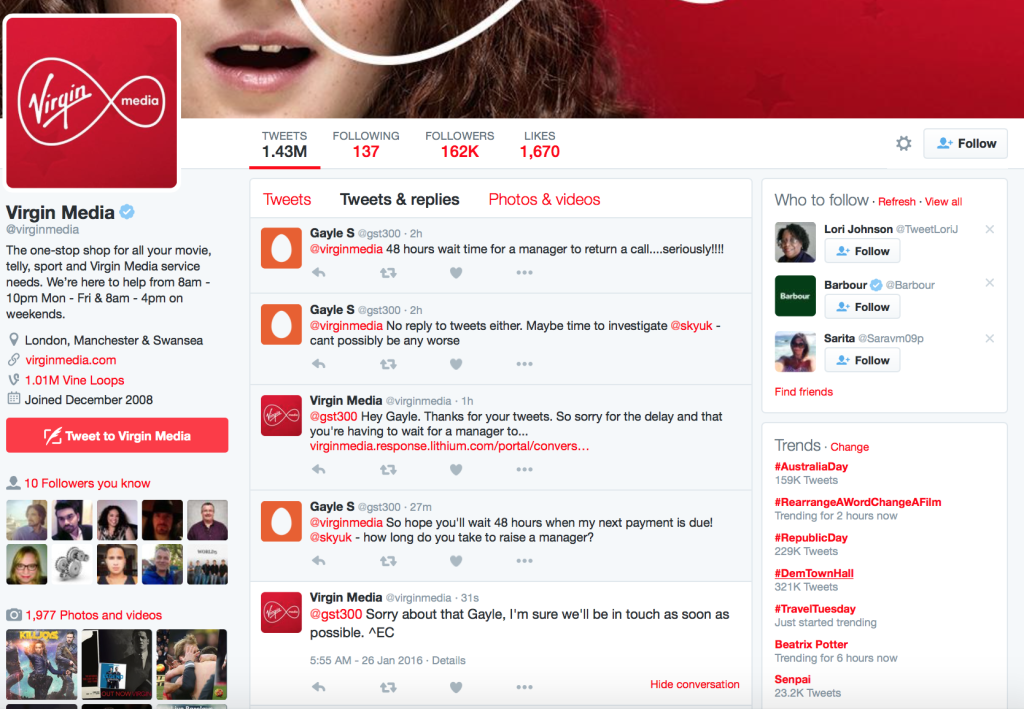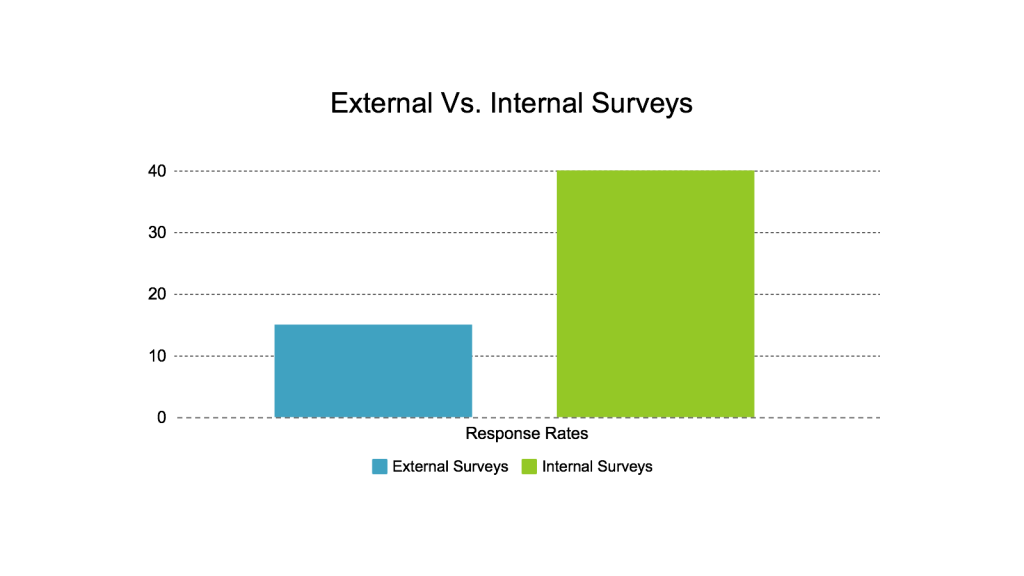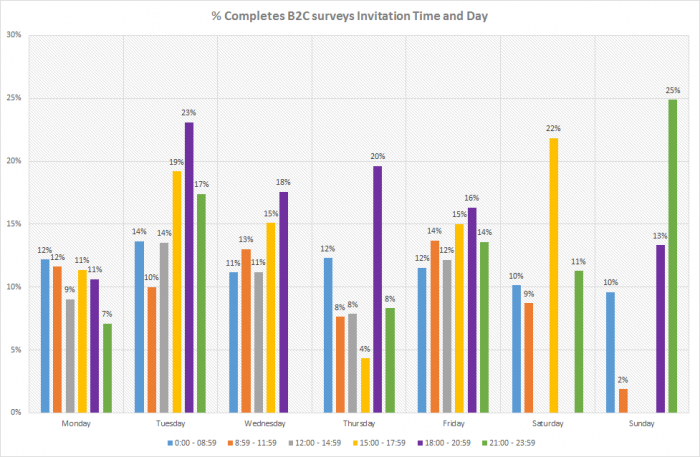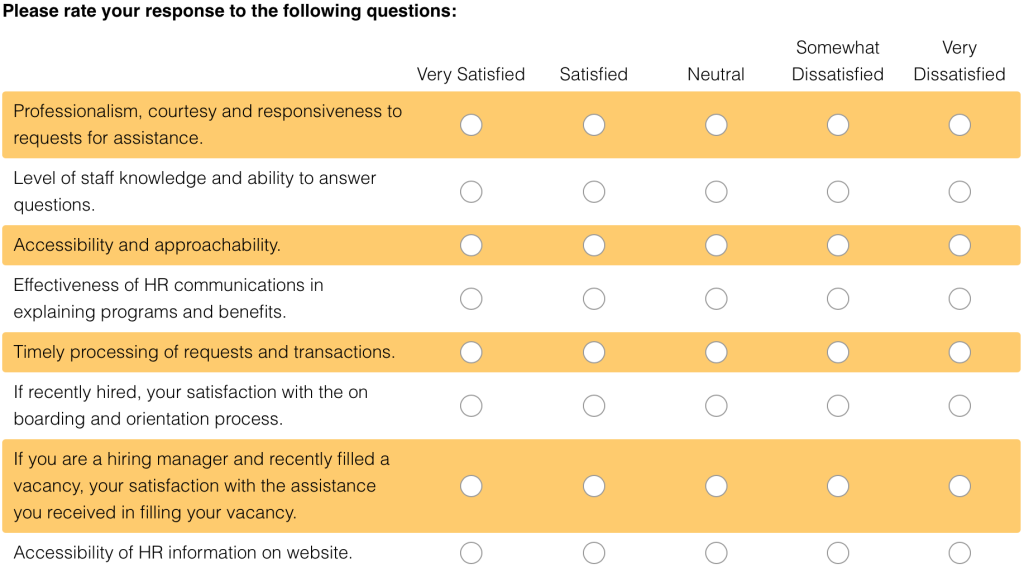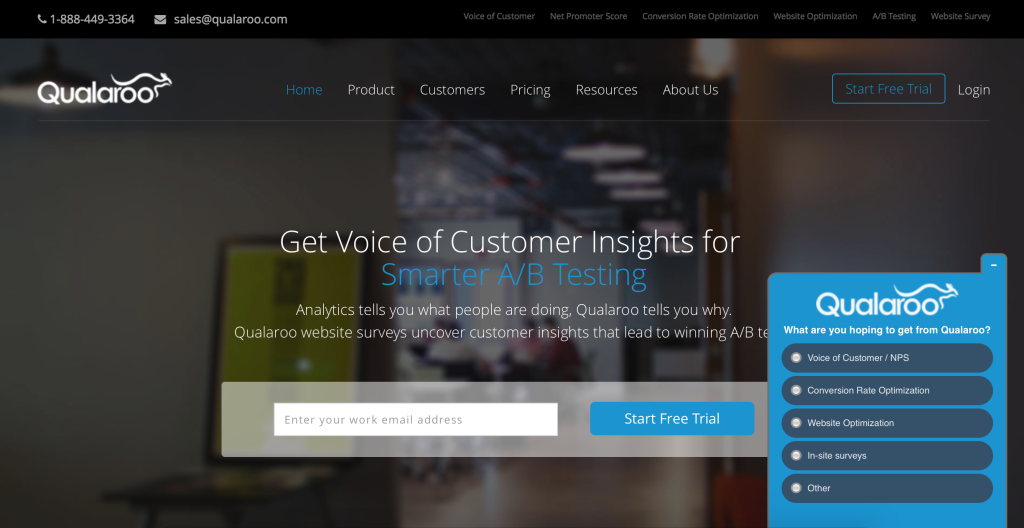How satisfied are your customers?
In our efforts to increase conversions and revenue, we often overlook questions like this. We’ll instead focus on landing page optimization, look at conversion rates and roll out split tests on our email campaigns.
There’s this implicit belief that the only real metric that contributes to revenue increase is conversion rate. It’s true to an extent. The higher your conversions, the more money you bring in.
But conversion rate isn’t the be all end all for making a little more money. There are myriad other elements that contribute to a healthy turnover, chief among them, customer satisfaction.
“How do satisfied customers help my bottom line?” you might ask. Well, the benefit of having a satisfied and content consumer base is three-fold.
1 – A happy customer is a profitable customer.
If a customer is satisfied with the service and product, you offer they’re likely to come back for more. With customer retention being 7x cheaper than acquisition, you’re not only getting repeat business but are also saving on marketing fees to attract new business.
2 – Happy customers refer their friends
Speaking of saving money on marketing, let your customers take over your promotional duties for you. No one does a better job of driving more business your way than a happy customer. They’ll also leave some of that oh so valuable social proof we all desire.
3 – Losing customers is a costly business
An unhappy customer will leave you behind for one of your competitors. Poor customer service and dissatisfied customers cost an estimated $83 billion per year!
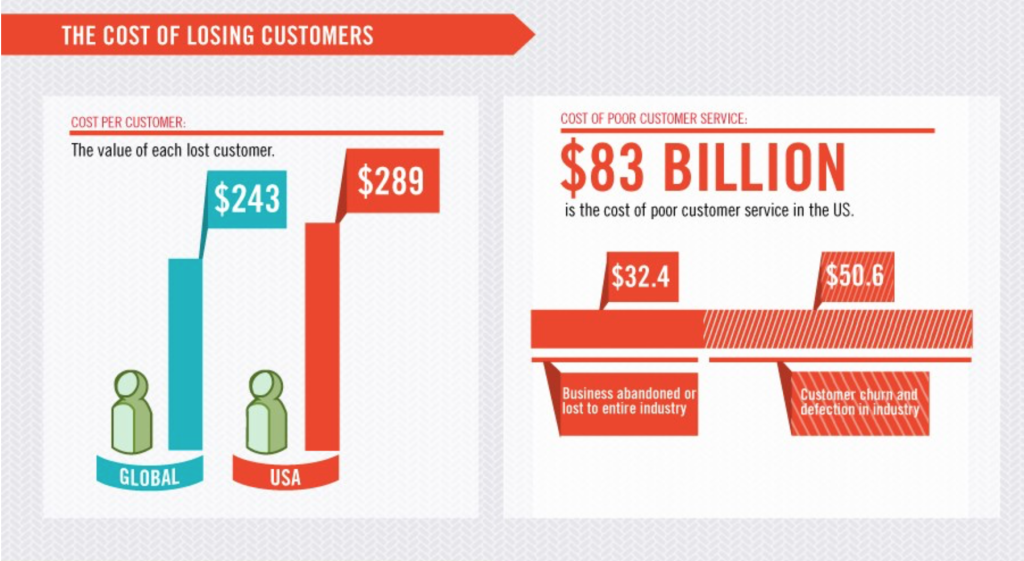
So yeah, customer relations and satisfaction are a huge deal for modern businesses. It’s not just about providing the best possible service because it’s the right thing to do, it’s about increasing the profitability and popularity of your business.
What’s the first step in improving the service your business provides and retaining a happy set of customers? Understanding current customer satisfaction levels and identifying the areas where customers aren’t wholly content.
The Questions You Need to Answer
Measuring customer satisfaction isn’t as simple as measuring conversions or revenue. There are no hard and fast numbers for you to analyze. The reviews and opinions you receive from your customers are highly subjective and often difficult to analyze.
Businesses often fall into the trap of making their customer satisfaction criteria too convoluted. It makes pulling the pertinent information from product and service reviews, or social media mentions too complicated.
There’s a lot of advice online which achieves nothing more than overcomplicating the task of measuring customer satisfaction. Truthfully, all you need to focus on is three primary questions.
1 – Are customer expectations being met?
2 – Will customers recommend you?
3 – Was the process easy?
The above three questions are broad yet accurate identifiers of customer satisfaction. However, they don’t offer the depth of information you need. What about product or service quality, delivery times, complaint resolutions and any of the other myriad reasons that affect how customers interact with your business.
You’ve got two options to gather this deeper level of information. The first is to ask dozens of extra questions about each minor facet of your business. But people don’t want to sit there for hours on end filling out a lengthy questionnaire for someone else benefit.
Instead, I recommend you ask one extra, open ended question so your prospects can answer in as much detail as they deem necessary and focus on the points they believe most important. That question is ‘why’.
Asking why adds much-needed clarity to the answer without the restrictions of the ever popular multiple choice format and does so in a fraction of the time. Let’s see a quick example.
Was the process easy?
No
Why?
Because your web navigation is too complicated, it took me too long to find what I was looking for.
Straight away you have an answer to whether the customer is satisfied. This is followed by a detail that not only explains their answer but also gives you a starting point for your optimization campaign.
Personally, I think this is a much better option that the lengthy multiple choice scaled answer questionnaires. Those things tend to lead the customer into answering on areas you think might be important.
If the problem lies outside the questions you ask, then you’ve incomplete data. You know people are unsatisfied but have no idea why.
Keep your measurement parameters open and you’ll have a much greater variety and depth of information to understand your consumers and hone your practices.
Let;s move on to how best to ask these questions.
Start with Examining your Correspondence
Unless you’re a brand new startup, you’re going to have all sorts of correspondence from your customers. These include, but aren’t limited to:
Letters
Emails
Tweets, Facebook mentions/reviews
Reviews on third party sites
Phone calls
And they’re all an invaluable source of information and insight into how satisfied your customers are.
Even picking just one medium will give you an insight into the problems that are affecting your customer’s satisfaction. Here’s a quick example from the Twitter feed of Virgin Media.
Straight away you can see that poor Gayle isn’t happy with the service. Let’s apply the aforementioned questions to this. Obviously, it has to do with customer expectations, so we could say:
Are customer expectations being met?
No
Why?
Poor communication. Having to wait a long time for (what I assume was) a promised call back
We’ve quickly identified that there’s a shortcoming in customer satisfaction and that it stems from poor communication. A potential solution could be to implement a new call back system, book all complaints in at a specific time, so they’re not kept waiting, etc.
But hold on, you can’t base your whole customer satisfaction strategy off one tweet. For all, we know this was an isolated incident and has no effect on the larger customer base.
You need to collate as many different sources as possible. Look at all correspondence sent to your business and check the various review sites on the web.
Collect and collate as much information as you can and look for recurring patterns. Are there particular themes or issues that appear across several mediums from different users? The more frequent a problem or complaint appears, the higher on your priority fix list it should be placed.
Pro tip – you can also look into the publicly available reviews and social media accounts of your closest competitors. Find what their customers are least happy about and use it to your advantage.
Identify the areas you provide a superior service and use it in your marketing copy to attract customers away from your competition.
When in Doubt, Ask
Customer satisfaction is all about the customer (duh!). You’re trying to discover what it is they like and don’t like about your business, instead of sneaking around review sites and reviewing correspondence, why not take the direct route and just straight up ask them?
There’s been a huge proliferation of survey and questionnaire services in recent years. You can create and send one to your customers in a matter of minutes now, so there’s no excuse not to.
Before you do, though, we need to go over the general ground rules for effective surveys and questionnaires.
1 – Keep it short
People are busy. They don’t have the time to waste on completing a survey for you. Survey Gizmo reports the average response rate for external surveys to be somewhere in the 10 – 15% region which, if I’m honest, seems a little on the high side to me.
2 – It’s all about timing
Timing can have a huge impact on the response rate you receive. Checkmarket’s got a great report on the time of day that saw the best completion rates for both B2B and B2C surveys.
However, this isn’t directly related to customer satisfaction. Friday may have been the best time in the above study, but if you send a customer satisfaction survey on a Friday for a purchase made the preceding Saturday it’s not going to work. The time difference is just too long, and the little nuances that make or break a great purchase experience will largely be forgotten.
Get your survey or questions out to your customers as soon as possible. In some cases, you might be able to even ask them mid-journey ensuring the most relevant information possible.
3 – Ask open-ended questions
The majority of customer satisfaction surveys and questions use a sliding scale. Here’s an example from Survey Monkey’s site.
I can’t understand why these are the preferred method for surveys. The above slider method offers easy analysis of results, but little in the way of actionable insights.
How are you supposed to rectify a “very dissatisfied” response in accessibility and approachability? Surely it would be easier to let the consumer tell you in their words what was wrong.
Open-ended questions can make analysis difficult, but they allow you to cut down on the questions and give customers ample opportunity to explain their grievances properly.
You’re aiming for detail here, not numbers.
4 – Incentivise
Response rates for surveys and questionnaires are low. If you really need the feedback consider offering an incentive to get your participants to see it through to completion. Doesn’t have to be much, but even a small offering could be enough to get you a few extra responses.
So with that out the way, let’s look at some of the options you’ve got for understanding customer satisfaction.
1 – Surveys
The faithful survey has long been marketers go to method for better understanding their audience.
For customer satisfaction, you’re going to want to send a survey through via email after a purchase has been made. The good news here is that you can automate this process to save time and ensure your attention is where it needs to be, on the results!
Survey Monkey has some great templates for you to work from. If I have one criticism, though, it’s with their focus on sliding scales. These are great, but only when supplemented with an optional ‘why’ box that allows them to explain why they gave you a good/poor score.
2 – UX Questionnaires
Sometimes customer satisfaction can be marred by a poor user experience.
Complicated navigation, unintuitive design, and complex purchase journeys aren’t only going to adversely affect your conversion rate. They leave a lasting poor impression with your customers and lower their opinion of your business.
One of the best tools for gaining a better insight into your user experience is Qualaroo. It puts those unobtrusive scroll boxes of a handful of questions in the bottom right corner of web pages.
The great thing about Qualaroo is that it collects feedback at the point of the event. This makes it great for figuring out any user experience issues.
3 – Interviews
With all the technological developments and online questionnaire services, it’s easy to overlook some of the older methods that still bring great results.
One such method is to interview your customers shortly after their interaction with your business. Interviews can be a great way to get a deeper insight into the thoughts and opinions of your customers.
Interviews are perfectly suited to getting an understanding of your customers and their expectations, but there are a few considerations you need to take before picking up the phone.
- Who’s the best person to interview
- The person buying the product or the person who uses it? Are they the same person, if not, who is better to interview or do both opinions have value for your overall strategy?
- Structure
- Are you going to go in with a rigid interview structure to find specific answers, or freewheel the process to get a wider understanding?
Customer Satisfaction is Just as Important as Conversion Optimization
The opinions of your customers should be the top priority for your business. We live in a hyper-connected era, and poor experiences and opinions are likely to spread like wildfire.
A single tweet or online review could cost you thousands of dollars in lost sales. You owe it to yourself to understand your audience, find out what they believe to be the primary issues in your service and rectify them.
If you’re experiencing difficulty in finding customer reviews and opinions for your business, it’s not necessarily a bad thing. Sometimes no news is good news.
I’m sure you’ll agree that happy customers are often the quietest. Consumers tend to be the most vocal when they’re unhappy with a product or the service they’ve received.
That’s why it’s so important to send questionnaires and prompt customers into action, so you have a good set of information from which to work from.

